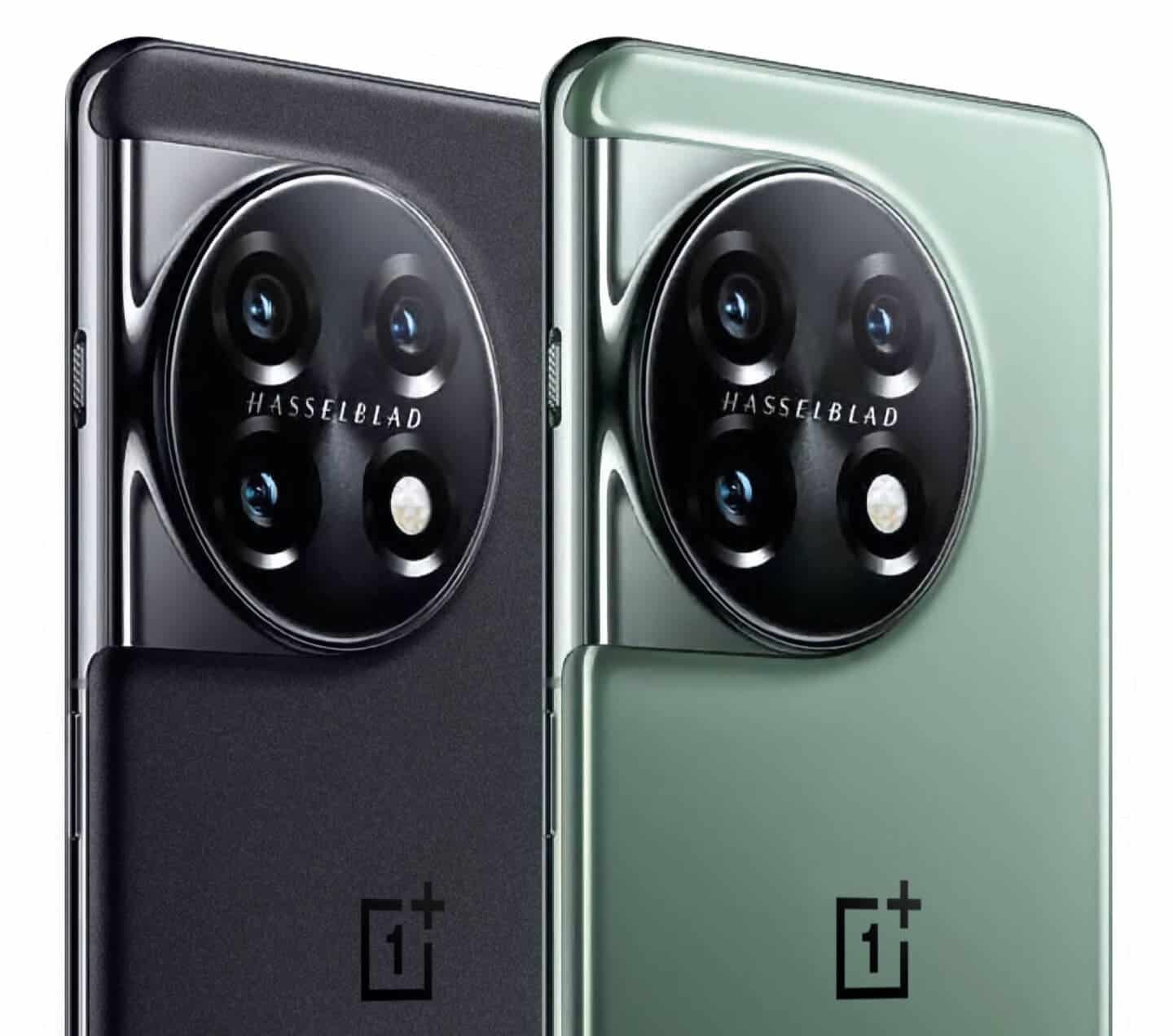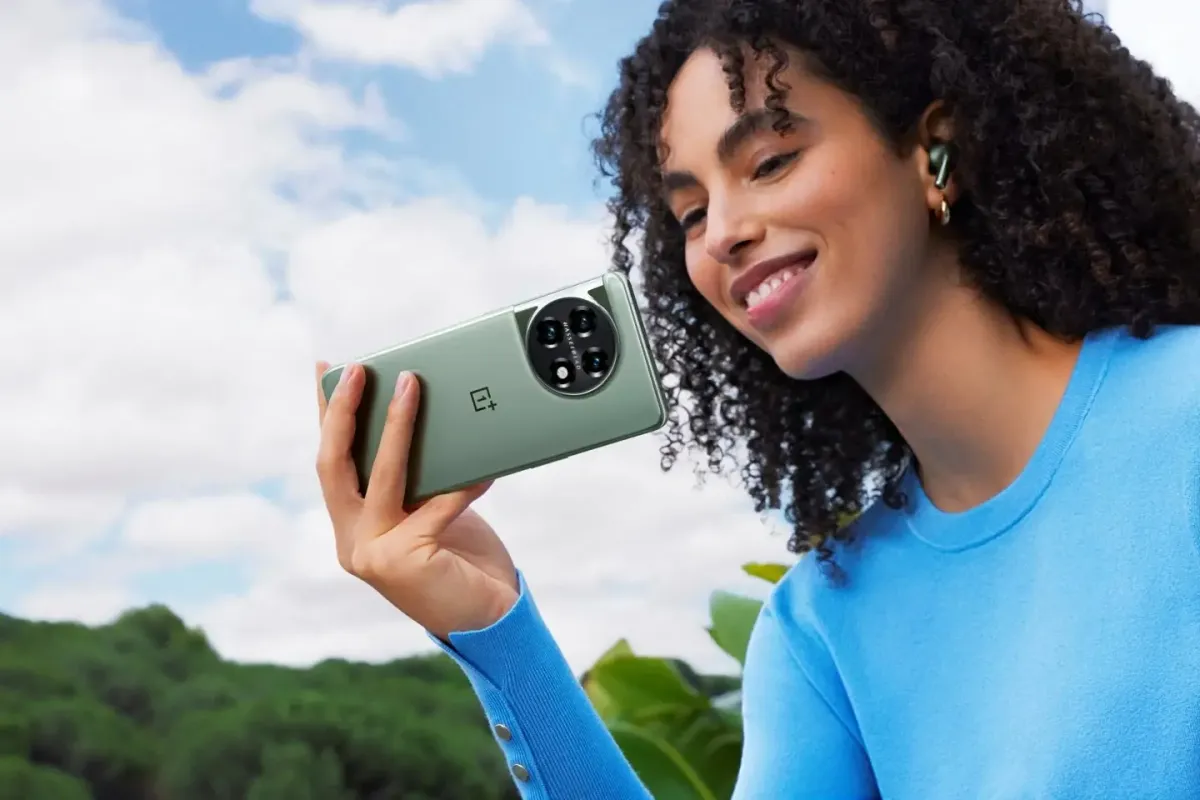In comparison to its predecessors, the OnePlus 11 offers some new features, including the incorporation of a thoroughly revised camera. Here is all what we know about the upcoming premium smartphone from OnePlus, including the release date, anticipated pricing, and technical specifications and more.
The beginning of next year will be a solid start for OnePlus with the introduction of its most premium smartphone, which is followed later by models that have fewer features and are less pricey. The OnePlus 11 will be available in 2023, and it will stand in front of the Xiaomi 13 and the Samsung Galaxy S23. Initially renowned for its "flagship killers," the company has recently adjusted its approach. Its primary series is now premium focused and competes directly with the top Android ecosystem players. What surprises might we expect from the OnePlus 11? Discover with us.
When will the OnePlus 11 be available?
The OnePlus 11 will be unveiled on February 7, 2023, as the company has confirmed. Prior to this, OnePlus released its top end smartphones specifically in April. At this moment, the regular OnePlus and the Pro of the series were both released. The OnePlus T models were launched six months later, in October or November. The calendar has changed since the previous generation, and the flagship has been separated from the rest. Even before the start of the year.
This was the situation with the OnePlus 10 Pro in 2022, which was an odd year because the OnePlus 10 was not released (while a OnePlus 10T appeared). A big shift in 2023: only the OnePlus 11 should be released at the start of the year, with no OnePlus 11 Pro.

What is the price of the OnePlus 11
The price of the OnePlus 9 in its configuration with 8 GB of RAM and 128 GB of storage was $719. Its cost jumped to $819 with 256 GB of internal memory and 12 GB of RAM. On the other hand, it is challenging to estimate the pricing of the OnePlus 11 today because the OnePlus 10 was not released in 2022. But keep in mind that the cost of the OnePlus 10 Pro remained the same as it was for the last generation.
OnePlus 11 design
Early renders of the OnePlus 11 have been revealed by the renowned leaker OnLeaks. Images that the brand itself has only partially validated. The images he shared should closely resemble the final result, assuming that minor elements can change. Instead of being square like on the OnePlus 10 Pro, the intimidating photo block on the OnePlus 11 is now round. The arrangement of the sensors within the block is still the same, with three optics located in the top left, top right, and bottom left of the device, followed by the LED Flash in the bottom right.
For brand fans, there is good news: the alert slider is back. It was a representation of OnePlus' identity, and its removal from the OnePlus 10T raised concerns about its future. This defining feature of OnePlus flagships will be present on the OnePlus 11, according to a video shared on Twitter by the official OnePlus account. Recall that by pressing the physical key incorporated into the device's edge, you can make quick changes to the notification mode without having to open the interface.
The rest of the OnePlus 11's design is very similar to that of the OnePlus 10 Pro, including the punch in the screen's left corner for the front camera and the optical fingerprint reader underneath the display. The device has only so far displayed itself in a black color scheme.

OnePlus 11 screen
The screen of the OnePlus Pro models has always been of the highest quality. And its successor should continue this fine practice. It will have a 6.7-inch AMOLED (likely LTPO 2.0) screen with Quad HD+ 1440p quality and a refresh rate of up to 120 Hz, which is already known.
Because the 120 Hz is not suitable for all uses, the latter should be adaptable. Which means that it will change automatically in accordance with the material displayed. As a result, the smartphone's autonomy is increased while the energy usage is decreased. Wide color coverage and HDR10+ compatibility are further expectations.
OnePlus 11 performance
Unsurprisingly, the Snapdragon 8 Gen 2 SoC powers the OnePlus 11. The company continues to be devoted to Qualcomm and gives itself the top processor now on the market for the Android market. It is sufficient to say that the smartphone's performance is guaranteed. The SoC is produced by TSMC using a 4nm production process. Just like the Apple 16 Bionic and iPhone 14 Pro.
The OnePlus 11 appears to perform as predicted in terms of theory. It receives a score that is sufficient to put the top smartphones of 2022 to shame thanks to its Snapdragon CPU. Although they use older processors, this is positive for the future.
The OnePlus 11's Qualcomm Snapdragon X70 modem for mobile connectivity makes it 5G ready. There are several memory setups planned, including 8 GB of RAM and 128 GB of storage. As well as 12 GB and 256 GB. A model with 16 GB of RAM and 256 GB of internal memory might also be available. Although it's unclear if it will be available in all markets.

OnePlus 11 battery
We expect that OnePlus will continue to advance with this new generation because the autonomy of the OnePlus 10 Pro was substantially better than that of the OnePlus 9 Pro. However, given that the OnePlus 11 will have a battery with a capacity of 5000 mAh, the same as that of its predecessor, which was better than the OnePlus 9 Pro's 4500 mAh battery, we shouldn't anticipate such a noticeable change. However, with software improvements and a chip that should be more energy-efficient, we can hope for a little longer battery life. The OnePlus 11 should provide superb autonomy in any case.
Like its parent company OPPO, OnePlus is popular for having invented rapid charging. The OnePlus 11 is anticipated to include SuperVOOC 100W technology compared to 80W earlier. The 5000 mAh battery in the OnePlus 10 Pro charged from discharge to full capacity in under 35 minutes. So the OnePlus 11 should do the same.
On the OnePlus 10 Pro, wireless charging claimed a 50W power capacity, while the OnePlus 11 is reportedly getting a 100W charger. The charging time for the OnePlus flagship should go under the threshold of 30 minutes. Additionally, there will be reverse charging capability for compatible accessories' or gadgets' batteries.
OnePlus 11 rumored specifications
- 6.7-inch (3216 x 1440 pixels) Quad HD+ 3D curved AMOLED, LTPO, 1Hz-120Hz refresh rate display
- Octa Core Snapdragon 8 Gen 2 4nm Mobile Platform with Adreno 740 GPU
- 12GB LPDDR5X RAM with 256GB (UFS 4.0) storage / 16GB LPDDR5X RAM with 512GB (UFS 4.0) storage
- Android 13 with ColorOS 13 (in China) / OxygenOS 13 (Global)
- Dual SIM (nano + nano)
- 50MP rear camera with Sony IMX890 sensor, OIS. 48MP Sony IMX581 sensor. 32MP RGBW (telephoto) 2x zoom, Sony IMX709 sensor; LED flash, Hasselblad camera
- 16MP front-facing camera
- In-display fingerprint sensor
- USB Type-C Port, Stereo speakers, Dolby Atmos
- Dimensions: 163.1×74.1×8.53mm; Weight: 205g
- 5G SA/NSA, Dual 4G VoLTE, Wi-Fi 6 802.11 ax 2X2 MIMO. Bluetooth 5.3, GPS (L1+L5 Dual Band) + GLONASS, USB Type-C, NFC
- 5000mAh battery with 100W SuperVOOC fast charging, wireless charging, reverse wireless charging
Does the OnePlus 11 have a good camera?

When compared to the high-end competitors like the Samsung Galaxy S, Xiaomi Ultra, Google Pixel, and iPhone, the camera quality at OnePlus is frequently worse. The OnePlus 11 will unquestionably make the greatest changes in this area. Demonstrating that the company is aware of this shortcoming and is working to address it. The association with Hasselblad is still ongoing.
The sensors on this new device are then all changed by OnePlus. The OnePlus 11's primary module has a 50 MP sensor and an aperture of f/1.6. Compared to the OnePlus 10 Pro's 48 MP sensor and f/1.8 aperture. This would be 1/1.3′′ in size and would make use of innovations like optical picture stabilization and phase detection autofocus. The ultra wide-angle would increase the field of view to 114. Which is standard for the genre (48 MP, f/2.2, 1 / 2.0′′). But keep in mind that the 150° angle of the OnePlus 10 Pro made it stand out.
With an optical zoom of up to 2x integrated, as opposed to up to 3x on the previous generation. The manufacturer's goals for the telephoto lens also appear to be waning. With the other hand, the definition increases to 32 MP on this lens, up from 8 MP previously.
It demonstrates how OnePlus is attempting to simplify its photographic offer by enhancing the primary sensor. Which is the most crucial and being more reasonable with regard to the other sensors. We hope that the brand makes up for the ultra wide-angle and telephoto lenses' lack of audacity on paper. With greater equipment expertise in order to avoid disappointing customers. Even with theoretically constrained technological specs, the photo experience can be outstanding. By applying the proper optimizations to trustworthy sensors.
For precise and reliable reasons, Hasselblad Color Calibration technology should get better. We anticipate support for 8K up to a minimum of 24 frames per second. And 4K up to 120 frames per second on the video side. Be aware that the front camera would be 16 MP. Which is significantly smaller than the OnePlus 10 Pro's 32 MP selfie sensor.
OxygenOS: OnePlus 11 software

OxygenOS 13, the manufacturer's software user interface with Android 13, will be in use in the OnePlus 11. The OnePlus 10 Pro was one of the first smartphones on the market to receive a reliable upgrade to the most recent version of Android, and OnePlus looks after the software monitoring of its high-end handsets. The company guarantees that its main series devices will receive major Android updates for at least three years. And security patches for four years. OnePlus' OxygenOS interface shares a foundation with OPPO's ColorOS interface, yet OxygenOS still has its own features and aesthetics.
Aquatic Aquamorphic is a new UI design coming with OxygenOS 13 for mobile devices. It has a "simpler and cleaner UI" in addition to more natural and flowing animations for a good experience. With five themes, OnePlus has improved its Zen Mode. Which enables you to take a rest or concentrate on a conversation or activity that is already underway.
With dynamic folder modification for better organization and improved control of apps, widgets, and update notifications, the launcher becomes smarter and more user-friendly. While the Always-On Display becomes compatible with the display of dynamic information by artificial intelligence, a configurable side toolbar gives users access to useful features without leaving an app.
HyperBoost GPA 4.0, a new feature that increases in-game frames per second (FPS) and balances your phone's power output and consumption through a variety of performance settings, is included in this edition.






Place comments
0 Comments
You are currently seeing only the comments you are notified about, if you want to see all comments from this post, click the button below.
Show all comments